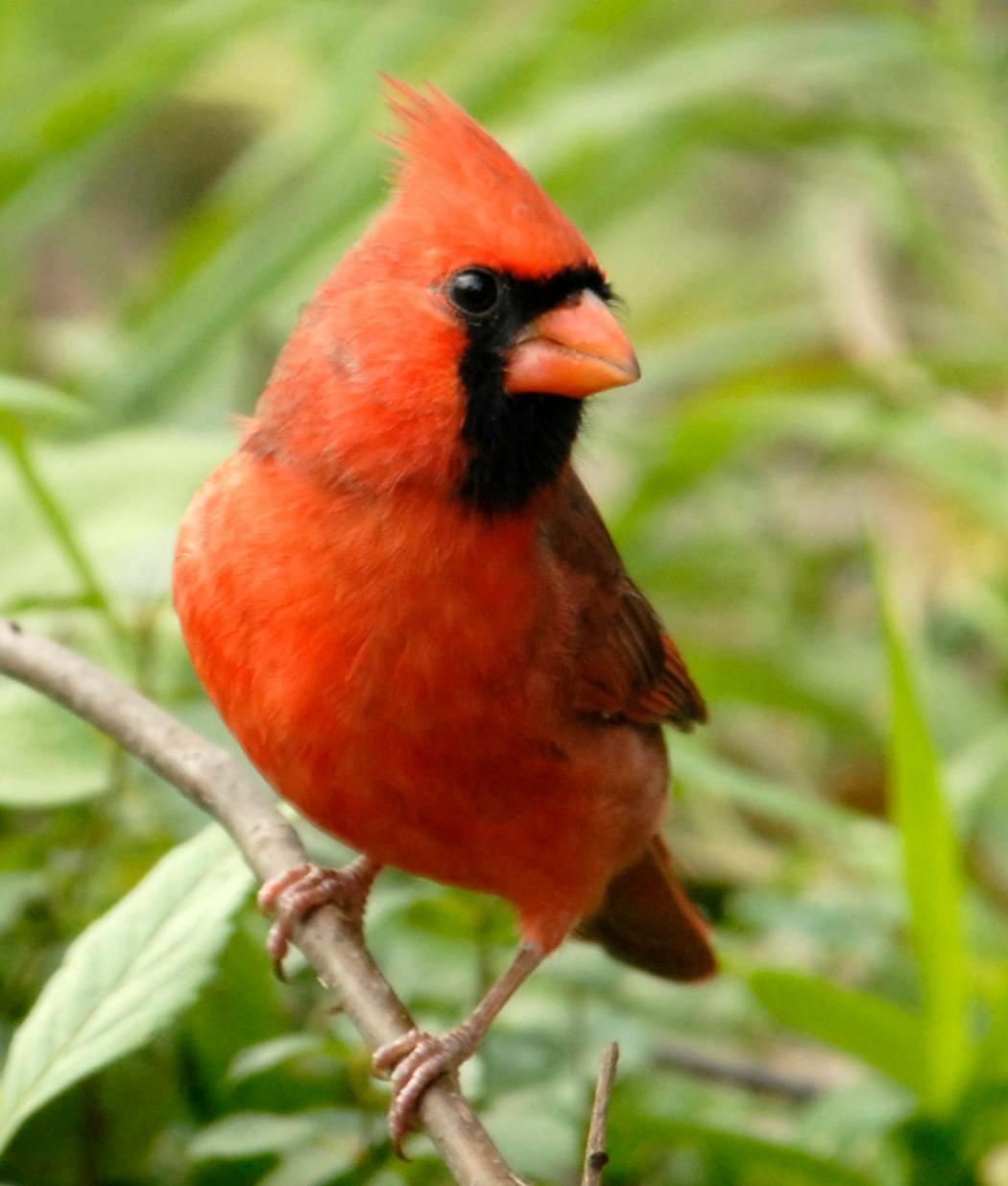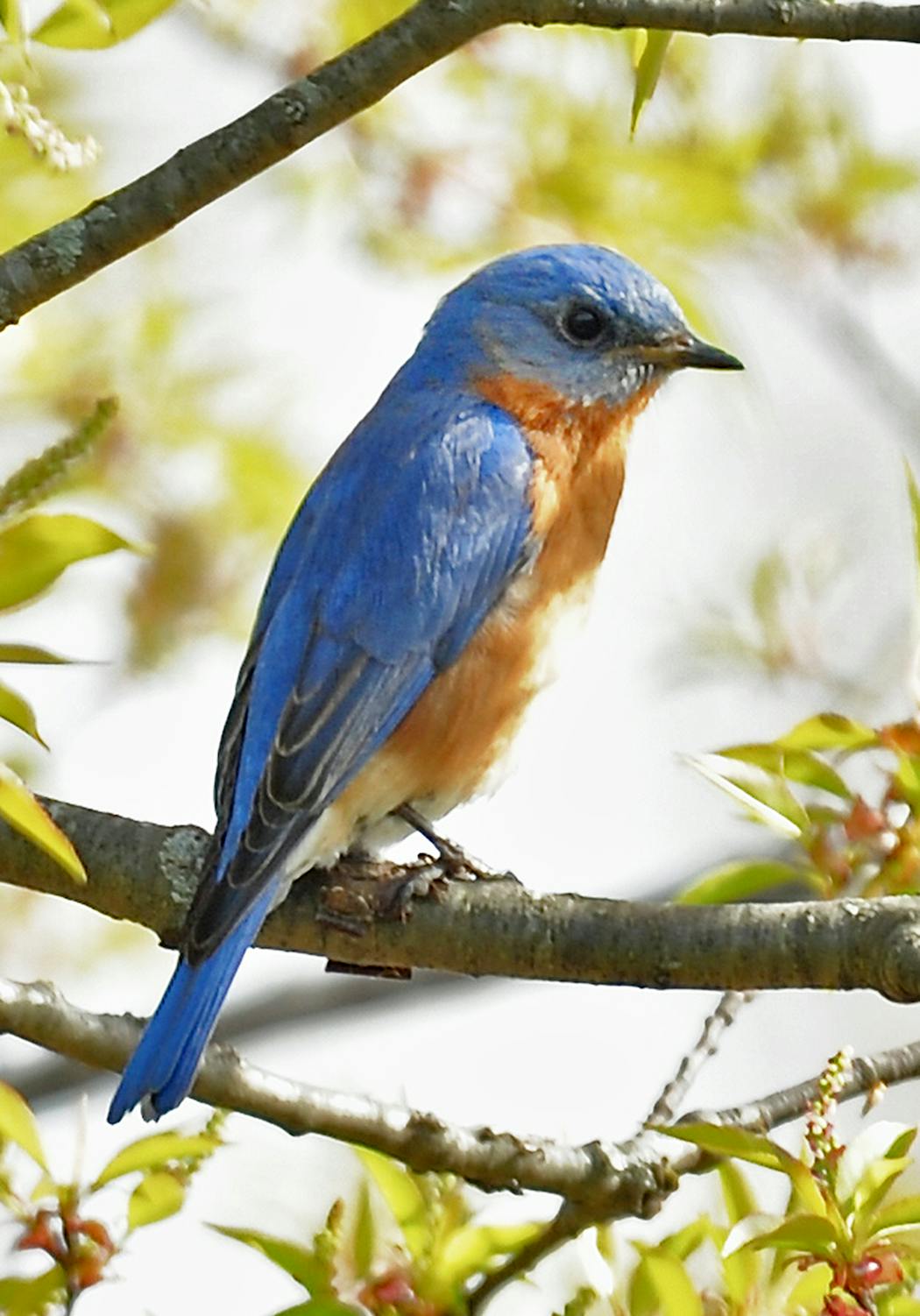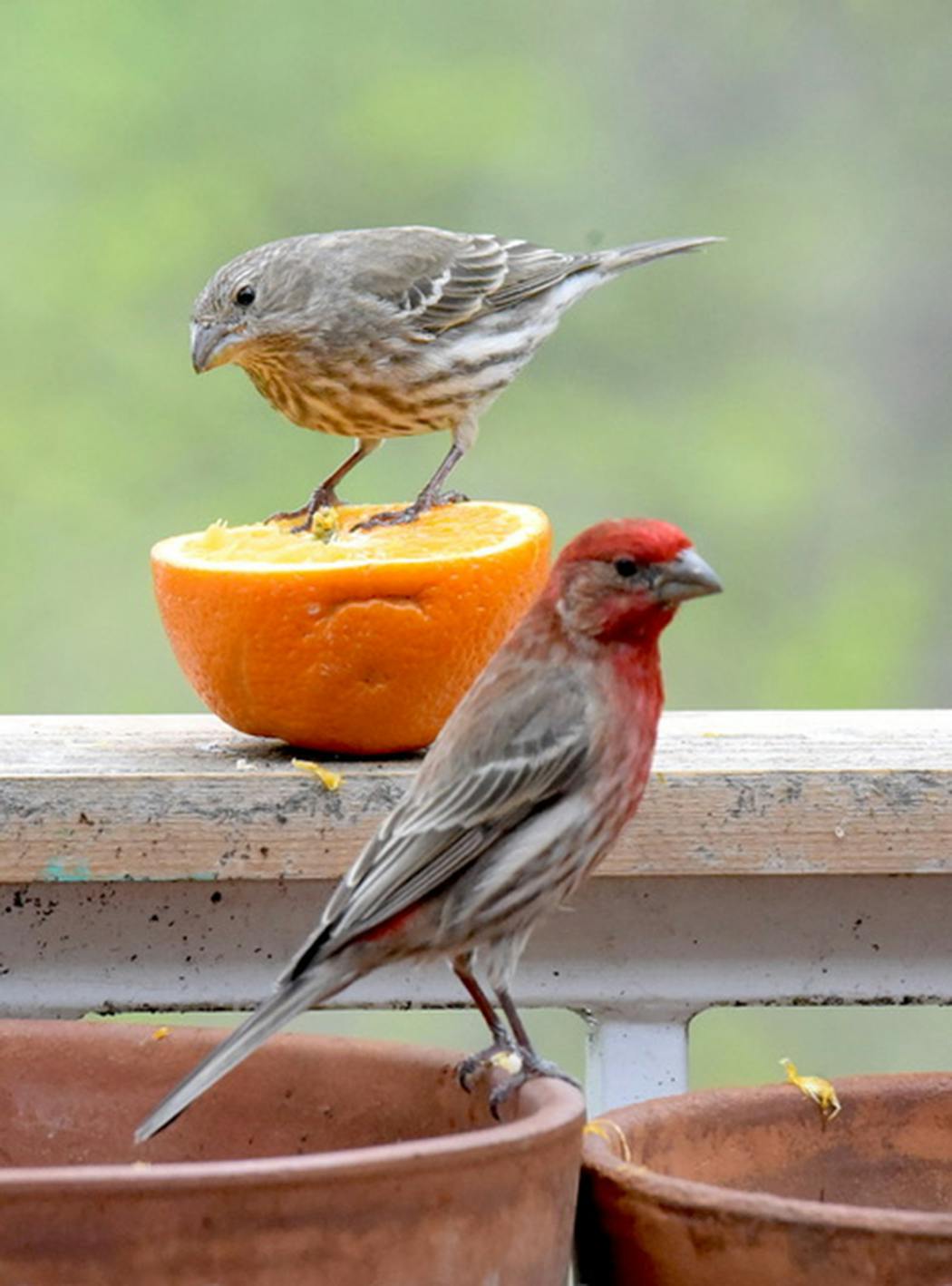Birds are some of the brightest and most colorful animals on Earth. The blues, reds, greens, purples and yellows of the avian world are rivaled, among vertebrates, only by the brilliant colors and patterns of tropical fishes.
Have you ever stopped to wonder why this is true? Why aren't bird feathers restricted to the shades of black, brown or gray seen in most mammal coats? Since so much in nature has a purpose, what's the story behind a male cardinal's bright red feathers, a bluebird's brilliant blue and a goldfinch's sunny yellow? Their feathers make them highly noticeable, and if we notice them, so do predators on the lookout for a meal.
Beginning millions of years ago, birds began evolving into a huge variety of species showing a great deal of variation in size, shape, color, habitat, food choices and flight style. The agent at work in creating all this diversity was what Charles Darwin called natural selection: Living creatures are in a continual battle for food and mates, and those best adapted to their environment will survive to pass on their genes slightly more often than those less well adapted.
Over time, that cardinal beak may have become larger and stronger, allowing them to crack very tough seed shells to reach the food inside. Bluebirds raised two or more broods each season, increasing chances for a survivor with their particular genes. This is survival of the fittest, but what about the male cardinal's intense red color, as opposed to a female cardinal's subtler taupe and light red?
This is where a different evolutionary system comes into play, that of sexual selection. Many bird experts now say that female birds are the major drivers of color in male birds. Brightness is a good indicator of a strong and healthy male, one who is in good condition, has good food sources and is capable of dominating his territory. Over many generations, as females selected brighter male cardinals, the population became brighter.
So, even though a red cardinal singing at the top of a tree is very visible to friends and foes alike, over time the advantage he enjoys in gaining the best mate offsets the species' inability to hide from hawks and other predators that want to eat them. Color also communicates with other males of the same species, sending the message that a bright male is in good shape and ready to fight to hold onto his territory.
Red-winged blackbirds can be very aggressive, and they use the brilliant red patch on their shoulders to communicate to other blackbirds, helping to attract a mate and repelling competitors. They can cover the patch with dark wing feathers when they don't need to send such burly messages. In one fascinating field study, researchers covered up some red-winged blackbirds' shoulder patches, resulting in those birds losing their territories more often than birds who had visible patches.
So, a bright red cardinal, a brilliant orange oriole and a standout yellow goldfinch each has a better chance of attracting a healthy mate, holding a good territory and thus raising a family to carry on his genes.
But we know only part of the story, because bird vision is fundamentally different from our own. Birds can see colors in the ultraviolet range, invisible to humans, so birds look quite different to each other than they do to us. Take the European starling, a species where males and females look alike, at least to UV-blind humans. Using a device that measures ultraviolet coloration, researchers have found that starling males have bright UV colors and that females use these in choosing a mate.
That plain-looking black grackle has an iridescent head and who know how it appears to other birds — maybe it flashes bright purple or green. Many songbirds have patches of UV-reflecting feathers, and Rick Prum, a Yale University ornithologist who studies this, has said, "Birds look great to us, but they look a lot better to themselves."
It adds to birds' allure to know that their color can be in the eye of the beholder.
St. Paul resident Val Cunningham, who volunteers with the St. Paul Audubon Society and writes about nature for a number of newspapers and magazines, can be reached at valwrites@comcast.net.

The 5 best things our food writers ate this week

A Minnesota field guide to snow shovels: Which one's best?

Summer Camp Guide: Find your best ones here

Lowertown St. Paul losing another restaurant as Dark Horse announces closing





